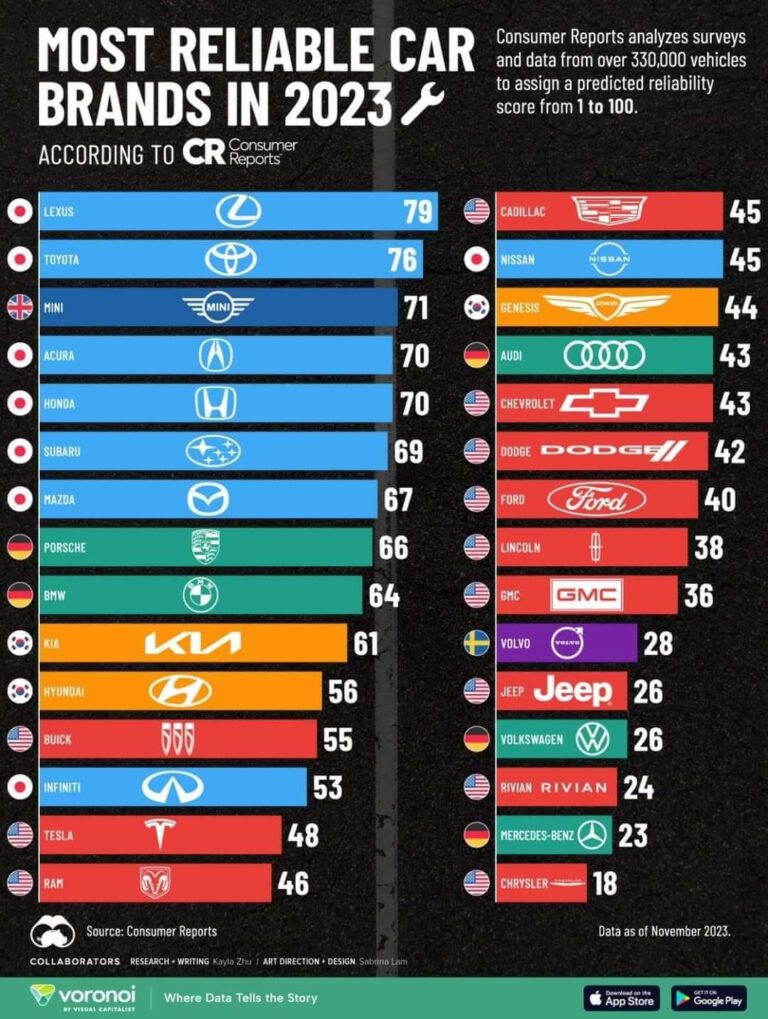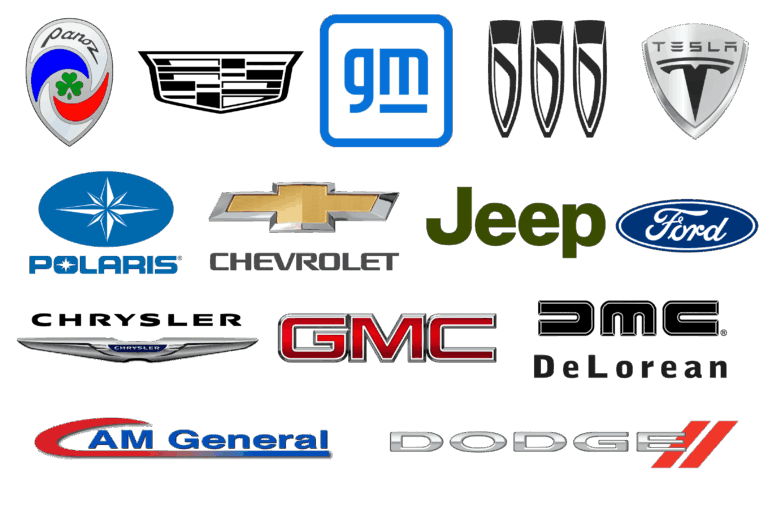Cheapest Brand New Car In The Philippines: Your Comprehensive Guide to Affordable Mobility
Cheapest Brand New Car In The Philippines: Your Comprehensive Guide to Affordable Mobility cars.truckstrend.com
The dream of owning a brand new car in the Philippines often comes with the daunting reality of hefty price tags. For many Filipinos, personal mobility is not just a convenience but a necessity, offering independence, enhanced productivity, and a lifeline for family needs. However, the perceived high cost of vehicle acquisition can quickly turn that dream into a distant fantasy.
This is where the concept of the "cheapest brand new car" becomes critically important. It’s about identifying vehicles that are accessible at the entry point of the market, making car ownership a tangible goal for a wider segment of the population. This comprehensive guide aims to demystify the process, spotlight the most affordable options, and equip you with the knowledge to make an informed decision that goes beyond just the sticker price. We’ll explore what makes a car truly "cheap" in the long run, how to navigate the buying process, and what to expect from your budget-friendly ride, ensuring that your journey to car ownership is smooth and sustainable.
Cheapest Brand New Car In The Philippines: Your Comprehensive Guide to Affordable Mobility
Understanding "Cheapest": More Than Just the Price Tag
When we talk about the "cheapest brand new car," it’s crucial to look beyond the initial cash outlay. A truly affordable car considers the Total Cost of Ownership (TCO), which encompasses every expense from the moment you drive it off the lot until you sell or dispose of it. Focusing solely on the lowest down payment or monthly amortization can lead to financial strain down the road.
Key factors contributing to a car’s TCO include:
- Fuel Efficiency: This is arguably the biggest ongoing expense. A car with a slightly higher initial price but significantly better fuel economy can save you thousands of pesos annually.
- Maintenance and Parts Availability: How much do regular service check-ups cost? Are spare parts readily available and affordable? Cars with common parts and widespread service networks often have lower long-term maintenance costs.
- Insurance Costs: While often mandatory, insurance premiums vary based on the car’s value, make, and model.
- Registration and LTO Fees: Annual renewal fees are a recurring expense.
- Resale Value: While not always a primary concern for budget car buyers, a car that retains a decent portion of its value will net you more when it’s time to upgrade.
- Reliability: A reliable car means fewer unexpected repairs, saving you both money and headaches.

Manufacturers achieve low initial prices by optimizing production, using smaller engines, offering fewer advanced features, and focusing on essential functionalities. While this reduces the upfront cost, understanding the full picture of TCO will help you make a truly economical choice.
The Contenders: Top Cheapest Brand New Cars in the Philippines
The Philippine automotive market has seen a surge of competitively priced vehicles, especially from Asian manufacturers, making car ownership more accessible. Here are some of the consistent front-runners for the title of "cheapest brand new car," known for their attractive price points and practical features.
- Suzuki S-Presso: Often cited as the king of affordability, the S-Presso stands out with its mini-SUV styling and incredibly low starting price. It’s compact, fuel-efficient, and surprisingly roomy for its size, making it ideal for urban commutes.
- Toyota Wigo: A perennial bestseller, the Wigo offers Toyota’s renowned reliability and extensive service network at an accessible price. It’s practical, easy to maneuver, and boasts good fuel efficiency, making it a favorite for first-time car buyers and small families.
- Kia Picanto: Combining a youthful design with commendable performance, the Picanto offers a zippy ride and surprising comfort for its segment. Its European styling and decent feature set make it a strong contender for those seeking value without compromising on aesthetics.
- Mitsubishi Mirage G4/Hatchback: The Mirage line is celebrated for its exceptional fuel economy and proven reliability. The G4 sedan offers a spacious trunk, while the hatchback provides versatile cargo space, both at very competitive prices.
- Hyundai Reina: Positioned as Hyundai’s budget-friendly sedan, the Reina provides a comfortable ride, decent interior space, and a trusted brand name. It’s a no-frills sedan built for practicality and affordability.
- Changan Alsvin: A rising star from China, the Alsvin offers a surprising array of features for its price, including modern styling and a comfortable interior. It challenges traditional segment leaders by offering more bang for your buck.
- Chery Tiggo 2 Pro: While slightly above the absolute cheapest sedans, the Tiggo 2 Pro is an entry-level crossover that offers SUV-like styling and a higher ground clearance at an incredibly attractive price, appealing to those who want a more commanding road presence without breaking the bank.

These models consistently top the charts for affordability, providing viable options for individuals and families looking to enter the world of car ownership without a massive financial outlay.
Key Factors to Consider When Buying an Affordable Car
Making an informed decision about your cheapest brand new car requires careful consideration of several factors beyond the list price.
- Budgeting Beyond the Sticker Price: Your budget must account for more than just the car’s advertised price. Factor in:
- Down Payment: Typically 15-30% of the car’s price. A larger down payment reduces your monthly amortization.
- Monthly Amortization: The fixed payment you make to the bank or financing company.
- Insurance: Comprehensive insurance is often required by financing companies for the first year.
- LTO Registration and Chattel Mortgage Fees: Initial registration and loan-related fees.
- Maintenance Budget: Allocate funds for periodic maintenance service (PMS), typically every 5,000 or 10,000 km.
- Fuel Costs: Estimate your weekly or monthly fuel consumption based on your driving habits.
- Fuel Efficiency: As highlighted earlier, this is paramount. Look for cars with small, efficient engines, ideally with modern fuel injection systems. Check official fuel economy ratings, but also read real-world reviews.
- Maintenance and Parts Availability: Research the reputation of the brand’s service centers. Are parts easily sourced? Are they expensive? Brands with a strong presence and local manufacturing often have more affordable parts and labor.
- Safety Features: Even on budget cars, prioritize essential safety features like Anti-lock Braking System (ABS) and at least two airbags (driver and passenger). Electronic Stability Control (ESC) is a bonus if available in higher trims.
- Space and Practicality: Consider your daily needs. Do you need seating for five? Enough trunk space for groceries or luggage? Will it fit easily in your parking space?
- Warranty and After-Sales Support: A good warranty (e.g., 3-5 years or 100,000 km) provides peace of mind. Reliable after-sales support ensures you have assistance when needed.
- Resale Value: While these cars are cheap, some brands (like Toyota) hold their value better than others, which can be beneficial if you plan to upgrade in the future.
The Buying Process: How to Secure Your Cheapest Ride
Acquiring your cheapest brand new car involves a structured process. Here’s a step-by-step guide:
- Thorough Research:
- Online: Browse official brand websites, automotive portals, and car reviews. Compare specs, prices, and features.
- Dealership Visits: Visit multiple dealerships for your preferred models. This allows you to see the cars in person, inquire about specific variants, and compare offers.
- Test Drive: This is non-negotiable. Drive the car on different road conditions if possible (city, highway). Pay attention to:
- Comfort and ergonomics (seating, controls).
- Engine performance and noise.
- Steering feel and suspension.
- Visibility.
- Overall driving experience.
- Secure Financing:
- Cash: The simplest way, avoids interest, but requires significant upfront capital.
- Bank Loans: Often offer lower interest rates than in-house financing. Apply to multiple banks to compare terms.
- In-House Financing (Dealership): Convenient, quicker approval, but sometimes with slightly higher interest rates.
- Pawnshops/Private Lenders: Generally not recommended due to very high interest rates.
- Prepare necessary documents: Proof of income (payslips, ITR), valid IDs, billing statements, bank statements.
- Negotiation: Don’t be afraid to negotiate. Ask for:
- Discounts on the vehicle price.
- Freebies (tint, floor mats, car cover, seat covers, EWD).
- Lower interest rates or flexible payment terms (if financing).
- Be polite but firm, and be prepared to walk away if the deal isn’t right.
- Review the Sales Agreement: Before signing anything, thoroughly read the sales contract, financing terms, and warranty details. Ensure all agreed-upon terms, discounts, and freebies are clearly stated.
- Payment and Release: Once financing is approved and documents are complete, make your down payment. The dealership will then process the vehicle for release, which includes LTO registration.
- Vehicle Inspection: On the day of release, carefully inspect your new car for any scratches, dents, or missing items before driving it off. Confirm all features are working.
Challenges and Solutions in Affordable Car Ownership
Owning a budget car can come with specific challenges, but most have practical solutions.
- Challenge: Limited Features and Comfort.
- Solution: While basic models might lack advanced infotainment or premium interiors, you can often add aftermarket accessories like seat covers, a basic touchscreen head unit, or better speakers to enhance comfort and functionality. Focus on what’s essential for your daily needs.
- Challenge: Perceived Safety Concerns.
- Solution: While some budget cars might have fewer advanced safety features, they still meet basic safety standards. Drive defensively, always wear seatbelts, and ensure regular maintenance to keep the car in optimal condition. Invest in comprehensive insurance for peace of mind.
- Challenge: Depreciation.
- Solution: All cars depreciate, but budget cars might have a higher percentage of value loss initially. Mitigate this by maintaining the car meticulously, keeping service records, and driving responsibly. A well-maintained budget car can still fetch a decent price upon resale.
- Challenge: Financing Hurdles.
- Solution: If you have limited credit history or a lower income, saving up for a larger down payment can significantly improve your chances of loan approval and reduce monthly payments. Explore different banks and consider a co-maker if necessary.
- Challenge: Unexpected Maintenance Costs.
- Solution: Stick religiously to the manufacturer’s recommended Periodic Maintenance Service (PMS) schedule during the warranty period. After the warranty expires, consider reputable independent mechanics who may offer lower labor rates for routine services. Save a contingency fund for unexpected repairs.
Tips for Maximizing Value from Your Budget Car
Getting the cheapest brand new car is just the first step. Here’s how to make the most out of your investment:
- Regular Maintenance: Follow the service schedule. Regular oil changes, tire rotations, and fluid checks prolong your car’s life and maintain its efficiency.
- Fuel-Efficient Driving Habits: Smooth acceleration, anticipating traffic, avoiding excessive idling, and maintaining proper tire pressure can significantly reduce your fuel consumption.
- Protect Your Investment: Use car covers, window tints, and proper parking to protect the exterior and interior from the elements, preserving its condition and resale value.
- Understand Your Warranty: Know what your warranty covers and for how long. Adhere to its terms to ensure you can claim repairs if needed.
- Join Owner Communities: Online forums or social media groups for your specific car model can be invaluable resources for tips, common issues, and recommended service providers.
Cheapest Brand New Car in the Philippines: Price Table (as of Early 2024 – Prices are Subject to Change)
| Make | Model | Variant (Entry-Level) | Starting Price (PHP) | Engine Type | Transmission | Key Features (Entry) |
|---|---|---|---|---|---|---|
| Suzuki | S-Presso | GL MT | ₱ 620,000 | 1.0L K10B (Gasoline) | 5-Speed Manual | 7-inch Touchscreen, Dual Airbags, ABS, Rear Parking Sensor |
| Toyota | Wigo | 1.0 E MT | ₱ 643,000 | 1.0L 1KR-VE (Gasoline) | 5-Speed Manual | Dual Airbags, ABS, Power Windows, Air Conditioning |
| Kia | Picanto | 1.0 LX MT | ₱ 707,000 | 1.0L Kappa (Gasoline) | 5-Speed Manual | Dual Airbags, ABS, Power Windows, Central Locking |
| Hyundai | Reina | 1.4 GL MT | ₱ 733,000 | 1.4L MPI (Gasoline) | 5-Speed Manual | Dual Airbags, ABS, Power Windows, Rear Parking Sensor |
| Mitsubishi | Mirage G4 | GLX 1.2 MT | ₱ 769,000 | 1.2L MIVEC (Gasoline) | 5-Speed Manual | Dual Airbags, ABS, Power Windows, Rear Parking Sensor |
| Changan | Alsvin | 1.4L MT | ₱ 659,000 | 1.4L (Gasoline) | 5-Speed Manual | Dual Airbags, ABS, Rear Parking Sensor, Projector Headlamps |
| MG | ZS | Style 1.5L MT | ₱ 848,888 | 1.5L VTi-Tech (Gasoline) | 5-Speed Manual | Dual Airbags, ABS+EBD, Traction Control, 8-inch Infotainment |
| Chery | Tiggo 2 Pro | 1.5L MT | ₱ 840,000 | 1.5L DVVT (Gasoline) | 5-Speed Manual | Dual Airbags, ABS+EBD, Rear Parking Sensor, Cruise Control |
Note: Prices are approximate suggested retail prices for entry-level manual transmission variants and are subject to change without prior notice. Dealer promotions, additional fees, and specific variant features may affect the final price.
Frequently Asked Questions (FAQ) about Cheapest Brand New Cars
Q: Is it safe to buy a cheap brand new car?
A: Yes, all brand new cars sold in the Philippines must comply with safety standards set by the government. While budget cars may lack advanced safety features of more expensive models, they typically come with essential features like airbags and ABS. Always drive responsibly.
Q: Are cheap cars fuel-efficient?
A: Generally, yes. Most affordable cars come with smaller engines (1.0L to 1.5L) designed for economy. This often translates to excellent fuel efficiency, especially in city driving.
Q: What’s the cheapest car with automatic transmission?
A: Many of the models listed above offer automatic transmission variants, usually at a slightly higher price point. For instance, the Toyota Wigo, Kia Picanto, and Suzuki S-Presso all have affordable automatic options.
Q: Can I get financing for these affordable cars?
A: Absolutely. Banks and in-house financing options are readily available for these vehicles. Due to their lower price, the down payments and monthly amortizations are more manageable, making financing more accessible.
Q: What are the hidden costs of buying a new car?
A: Beyond the sticker price, hidden costs include LTO registration fees, chattel mortgage fees (if financed), comprehensive insurance (often required for the first year), and ongoing expenses like fuel, maintenance, and parking fees.
Q: How long do these budget cars typically last?
A: With proper and regular maintenance, a budget car can easily last 10-15 years or more. Their simpler mechanics often mean fewer complex issues, and readily available parts contribute to their longevity.
Conclusion
The journey to owning a brand new car in the Philippines doesn’t have to be an unattainable dream. By focusing on the "cheapest brand new cars," aspiring car owners can find reliable, practical, and fuel-efficient vehicles that fit within a realistic budget. Understanding that "cheapest" extends beyond the initial purchase price to encompass the total cost of ownership is key to making a truly smart investment.
With a wealth of options available from trusted brands, coupled with strategic financial planning and a commitment to responsible car ownership, the dream of mobility is more accessible than ever. This guide empowers you to navigate the choices, understand the process, and ultimately drive home a brand new car that perfectly suits your needs and your wallet, ushering in a new era of independence and convenience.







